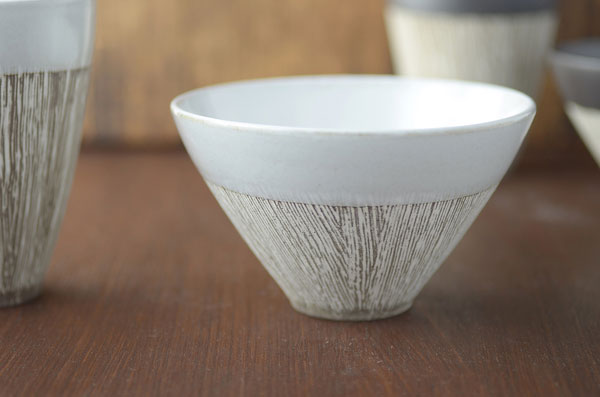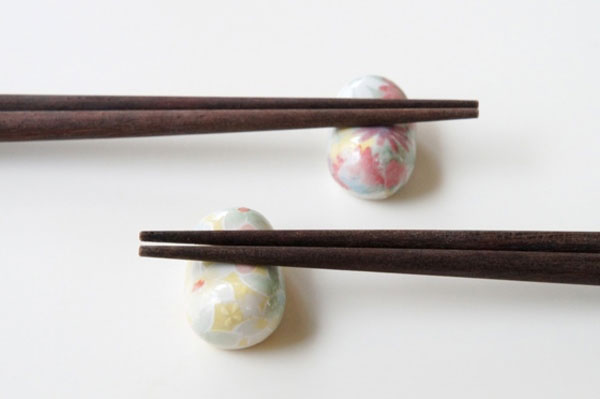
- Ceramic
- Gifu
Mino ware Mino yaki
Produced with high quality clay
in Japan's largest porcelain-producing region
Description
What is Mino ware ?
Mino ware (called Mino yaki in Japanese) is a ceramic ware produced in the Tono area of Gifu prefecture. It has a long history and tradition but has adapted to modern life style. A notable feature of Mino ware is its wide variety of pottery. Mino ware does not maintain a single style, but instead has over 15 types of pottery registered as traditional crafts. Here are three notable types of Mino ware. The first is Oribe ware which was based on the aesthetics of Oribe FURUTA, disciple of Sen no Rikyu (influential master of the tea ceremony, 1522-1591) and it has a deep green glaze, a unique form and geometrical design patterns. Depending on the style of production, many kinds of colors are available including black and blue. The next notable type of Mino ware is Setoguro, an all black glazed item that was mainly produced during the Tensho period (1573-1593), produced by being pulled out of the kiln while still red-hot. Therefore it is often referred to with the names of tensho guro after the name of the period it was first made during or hikidashi guro which means to pull out. Shino ware is the third notable type of Mino ware and has design patterns underneath its glaze. During the Azuchi-Momoyama period (1573-1600), Shino ware's golden age, it possessed a beautiful light crimson color and bubbly texture produced by feldspar glaze. Production of Shino ware disappeared during the Edo period (1603-1868) but Toyozo ARAKAWA (1894-1985), who was given the title of Living National Treasure, made tremendous efforts to revive it and was able to bring it back. Kizeto, which has lately received renewed attention, is another popular kind of Mino ware with a humble and simple form.
History

Mino ware was created during the 5th century when Sue ware, potter's wheels, and cellar kilns were brought to Japan from the Korean peninsula. During the Heian period (794-1185), Sue ware white porcelain was improved by being fired with an ash coating glaze. From the Azuchi-Momoyama period (1573-1600) until the beginning of the Edo period (1603-1868), the rise of the tea ceremony brought a wealth of artistic pottery, and production of the prominent types of Mino ware like Oribe, Shino, and Kizeto highly increased. Then during the second half of the 17th century, household containers for daily use started to be produced and pottery covered in white glaze to look like porcelain started being produced. In the final years of the Edo period (1603-1868), porcelain production began and translucent feldspar porcelain came to be produced. In the Meiji period (1868-1912), various new techniques such as usage of copper transfer sheets and screen printing were developed as the coloring process became stable with the importation of zaffer (blue pigment). Around the middle of the Meiji period, to lower the production costs and produce a large quantity of daily household containers so as not be inferior to other production areas, they divided their work by product line. Then, at the end of the Taisho period (1912-1926), mechanization advanced by electricity supply increased the production volume, which changed the wood-burning climbing kilns to charcoal kilns. During the Showa period (1926-1988), production of fine items and tiles started, and Mino ware became the form of pottery boasting the greatest production in Japan, both in terms of prestige and volume.
General Production Process
- 1. Clay kneading Clay with a sufficiently uniform hardness and moisture level is kneaded little by little while rotating. The rotation serves to remove the air bubbles from inside the clay. Because the kneading involves both large rough massaging and smaller careful massaging, the form of the clay ends up resembling a chrysanthemum while it is being kneaded hence its nickname, "chrysanthemum kneading".
- 2. Shaping Mino ware is mainly produced by potter's wheel molding, hand rolling, or slab building. Mass production is carried out using a great variety of templates, from prototype models to working molds. Slip casting produces muddy clay inside a concave plaster mold. Pressure casting is a method of casting that uses compressed air to send clay mud to a plaster mold. Other molding methods that may be used include mechanical potter's wheel molding, fully-automatic molding, and press molding.
- 3. Drying Once the pieces have been planed or shaved down, they are slowly dried before the bisque stage. They are dried in the shade or under the sun. The time required for drying varies depending on factors like the application of patterns, decoration, the thickness of the unglazed pottery on which patterns are drawn, as well as the size of the pieces.
- 4. Bisque firing This process removes moisture from the raw material and increases durability by burning combustibles. The firing is carried out slowly at a temperature of around 700 to 800℃ (1292 to 1472℉). The bisque firing makes it easier to apply glaze.
- 5. Underglaze decoration Underglaze decoration is a process carried out prior to glazing where patterns are drawn beneath the glaze. After the bisque firing, pigments of desired colors are used to decorate the pieces. Cobalt, iron, and copper are the most used pigments. Once the drawing is complete, transparent glaze is applied. When using zaffar which is a cobalt oxide, the color becomes indigo blue while pieces drawn with iron develop a dark reddish-brown or blackish-brown color.
- 6. Glazing The glaze melts when it is fired and creates a glass-like coat on the surface, which reduces permeability and increases durability. This acts as a coloring and coating that shines and decorates the piece. There are three basic kinds of glaze: ash, feldspar, and lead. But iron, copper or metal can also be added to the basic ones, creating many different types of glaze. Some frequently used glazing techniques are drip glazing, spray glazing, and dip glazing.
- 7. Glost firing Glost firing at a high temperature is carried out after the glazing. The pieces are carefully packed into the kiln to ensure that the density inside the kiln is uniform. Some major types of kilns are climbing kilns, gas kilns, and electric kilns.
- 8. Overglaze decoration Figures and patterns are painted on the glost fired pieces with overglaze decoration brushes. The overglaze decoration painting techniques include red painting, colors other than red painting and five-color painting. The paints are a mixture of metallic components such as iron, copper, cobalt, or manganese with soda or lead. After the delicate lines are drawn, the pieces are sent to firing between 700 and 800℃ (about 1292 to 1472℉), which is lower than the glost firing to prevent colors from scattering.
- 9. Finishing After the final firing, the surface of the piece is filed down and it is complete.
Where to Buy & More Information
Mino-Ware Tradition Indutrial Hall
-
Address
-
Tel.+81-572-55-5527
-
ClosedMondays (open if holiday, closed the next day), around the New Year
-
Business Hours9am to 4:30pm
-
Website
See more Ceramic
- Imari ware/Arita ware
- Hasami ware
- Kutani ware
- Mashiko ware
- Shigaraki ware
- Bizen ware
- Hagi ware
- Koishiwara ware
- Mino ware
- Tobe ware
- Tokoname ware
- Karatsu ware
- Kasama ware
- Satsuma ware
- Iga ware
- Mikawachi ware
- Agano ware
- Otani ware
- Obori-soma ware
- Tsuboya ware
- Aizu-hongo ware
- Shodai ware
- Echizen ware
- Akazu ware
- Tamba-tachikui ware
- Yokkaichi-banko ware
- Izushi ware
- Kyo ware/Kiyomizu ware
- Iwami ware
- Amakusa ceramics
- Seto-sometsuke ware
- Sanshu Onigawara Crafts































































































































































































































































































